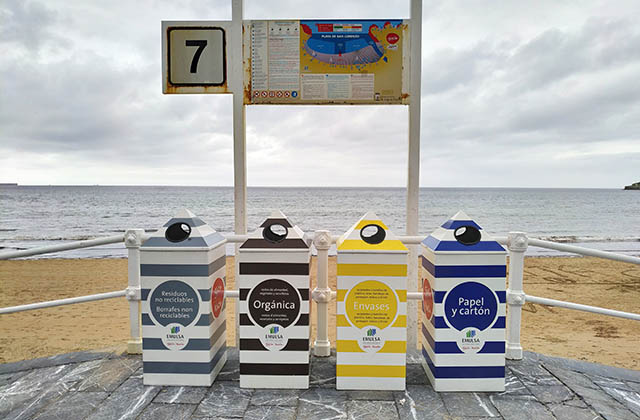2022

Plastics And Chemicals When It’s Time To Say Goodbye
Introduction
For almost a century, plastics and chemicals have been a part of our lives. They’re in the food we eat, the clothes we wear, and even in the air. But what happens when we stop using these products? For example: Firefighting foam used on military bases to combat fires contains polyfluoroalkyl substances (or PFAS), which can stay in the environment for decades once released into it. These chemicals are linked to cancer and other health issues such as thyroid disease, hormonal imbalance or autoimmune disorders. In this blog post, we’ll take a look at how these types of chemicals affect our health and how you can avoid exposure from them! No matter how big or small say goodbye to your trash with skip bin hire Adelaide collecting them.
Who Is Most At Risk
If you fall into any of the following categories, it’s time to make a change:
- If you work with plastics and chemicals in any capacity
- If you live near sites where these chemicals are used
- If you drink from contaminated water sources
- If you’re pregnant or breastfeeding (or planning to become pregnant)
A Growing Concern in the Health of Veterans and Communities
As a veteran, you know all too well the sacrifices and risks that come with serving your country. The same can be said for many of your neighbors and friends who have been exposed to chemicals at military sites across the country—a growing concern in their health, as well as their communities.
PFOA and PFOS are two per- and polyfluoroalkyl substances (PFASs) that have been used in a wide range of products and industries, including firefighting foams. Both chemicals are linked to serious health effects including cancer; infertility; liver damage; developmental defects in fetuses, infants and children; thyroid problems; hormonal changes in men’s testes; increased risk of high cholesterol levels; weight gain around waistline as body mass index increases among adults who gained higher amounts (amounts above average); immune system problems either through increased susceptibility or greater severity when compared with people without exposure to PFOA/PFOS
A Look at a Few Sites Where PFASs Destroyed Lives
What are the health problems caused by PFASs?
There is a long list of health issues linked to PFOA and PFOS. The most common include:
- Kidney and liver damage
- Abdominal pain, nausea, vomiting, and diarrhea
- Weight loss or weight gain
- Thyroid disease (including hypothyroidism)
The 10 Biggest Users Of Firefighting Foam Worldwide
You may be surprised to learn that the United States is not the biggest consumer of firefighting foam worldwide. In fact, it’s not even close. The nation ranks fifth in terms of per capita consumption of these harmful chemicals, behind Australia (1st), South Africa (2nd), Brazil (3rd) and India (4th).
In addition to the above list, you may also be surprised to hear that just three countries account for more than half of all firefighting foam used worldwide: The United States accounts for 44%, South Africa accounts for 17% and Australia accounts for 9%.
PFAS Testing at Little Rock Air Force Base and Few Surrounding Communities
- PFAS Testing at Little Rock Air Force Base and Few Surrounding Communities
- Testing is done by the EPA
- Results of the testing were released in May 2018. The results showed that there was PFAS contamination in drinking water, soil, and groundwater.
What Are the Effects of These Chemicals?
PFASs can cause a number of health issues. They’ve been linked to:
- Rashes, liver damage, and reproductive issues in children and adults alike
- Cancer
- Disruption of the endocrine system, which regulates hormone production
How Does PFAS Affect Humans?
PFASs are a class of chemicals that are used in a number of products. They’re known to be toxic and can cause health effects in humans, including cancer, immune system problems and high cholesterol. The EPA has not set legal limits for PFAS levels in drinking water because the agency is still trying to figure out how much exposure is safe for humans. But because PFASs have been linked to so many health problems, it’s worth finding ways to avoid them when you can—especially when it comes time to clean out your closets or remove old furnishings from your home (a process known as “demolition”).
For certain plastics and chemicals, it’s time to say goodbye.
When you think of the word “chemicals,” your mind might conjure up images of science class in high school or the smell of an industrial laundry detergent. But chemicals are all around us—in our food and water, in our homes and workplaces, even in our clothing. They’re everywhere!
But for some plastics and chemicals, it’s time to say goodbye. That’s because some chemicals can be harmful to your health—and they’re becoming a growing concern among veterans and communities near sites affected by these toxic substances. On top of that, we’ve also seen how plastic pollution has devastated lives at several sites around the country over the past decade or so:
- In California, residents living near Camp Pendleton reported illnesses after firefighting foam was used on military bases; some even died from exposure to PFASs (a type of chemical used in many products).
- At Joint Base Andrews near Washington Dc., people exposed to wastewater from a wastewater treatment plant experienced symptoms similar to those experienced by Camp Pendleton residents—including cancerous tumors on their lungs!
Conclusion
So, what does this mean for people who live near military bases? The main takeaway here is that as the effects of PFASs are becoming more widely understood, it’s time to be more vigilant about protecting our communities. With increased awareness and testing, we can all work together toward a safer future for everyone. Find out the environmentally friendly way to dispose your garbage.